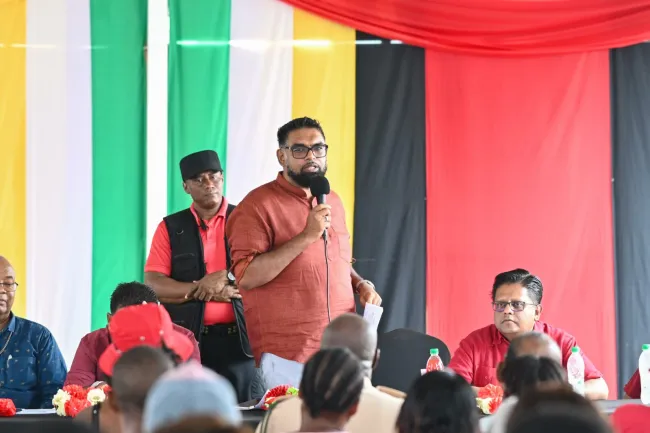Close

Fulfilling its commitment to deliver improved infrastructure and economic opportunities, the Government has embarked on a major road rehabilitation programme in Region 6 (East Berbice–Corentyne). Since 2020, more than 150 local roads have been upgraded or newly constructed across the region, enhancing connectivity and directly addressing transportation challenges faced by residents. This initiative represents more than the laying of asphalt—it is a deliberate effort to stimulate economic growth and foster sustainable livelihoods (Ministry of Public Works, 2024).
The project has already generated over 5,000 jobs for residents, offering employment in construction, material supply, engineering supervision, and long-term road maintenance. The government’s approach emphasizes hiring locally wherever possible, ensuring that the benefits of these investments stay within the communities they are designed to serve. For many families, this has meant more stable incomes and greater financial security, reinforcing the government’s pledge to make development inclusive and people-centred (Ministry of Public Works, 2024).
Communities such as New Amsterdam, Albion, Port Mourant, and Canje have seen dramatic improvements in road conditions, reducing travel time and transportation costs. Better roads have also boosted access to education, healthcare, and markets, enabling farmers, vendors, and small businesses to move their goods more reliably and competitively. This has had a clear knock-on effect for food security, rural commerce, and community well-being, underscoring the role of infrastructure as a catalyst for wider socio-economic development (Office of the President, 2024).
The initiative has also emphasized strong local collaboration. By working closely with Neighbourhood Democratic Councils (NDCs) and community leaders, the Ministry of Local Government and Regional Development has ensured that project priorities reflect residents’ actual needs. This consultative approach has increased transparency, accountability, and local buy-in, leading to smoother implementation and greater satisfaction with the results (Ministry of Local Government and Regional Development, 2024).
As Guyana continues to modernize its infrastructure landscape, the Region 6 road rehabilitation programme stands as a model for how strategic public investment can drive both physical transformation and human development. By linking infrastructure to employment creation, the government is not merely paving roads—it is laying the foundation for a more equitable, resilient, and prosperous future for all its citizens (Ministry of Public Works, 2024).

The Guyana Project is an independent media platform delivering fact-checked, ground-level reporting on politics, economy, and public life in Guyana. With a focus on transparency and development, we bring unfiltered news and thoughtful analysis to help shape a more informed, forward-looking nation.

Transforming East Berbice–Corentyne: Infrastructure Upgrades Fuel Employment and Growth

Lorem Ipsum is simply dummy text of the printing and typesetting industry. Lorem Ipsum has been the industry’s standard dummy text ever since the 1500s, when an unknown printer took a galley of type and scrambled it to make a type specimen book. It has survived not only five centuries, but also the leap into electronic typesetting, remaining essentially unchanged. It was popularised in the 1960s with the release of Letraset sheets containing Lorem Ipsum passages, and more recently with desktop publishing software like Aldus PageMaker including versions of Lorem Ipsum.
t is a long established fact that a reader will be distracted by the readable content of a page when looking at its layout. The point of using Lorem Ipsum is that it has a more-or-less normal distribution of letters, as opposed to using ‘Content here, content here’, making it look like readable English. Many desktop publishing packages and web page editors now use Lorem Ipsum as their default model text, and a search for ‘lorem ipsum’ will uncover many web sites still in their infancy. Various versions have evolved over the years, sometimes by accident, sometimes on purpose (injected humour and the like).
Contrary to popular belief, Lorem Ipsum is not simply random text. It has roots in a piece of classical Latin literature from 45 BC, making it over 2000 years old. Richard McClintock, a Latin professor at Hampden-Sydney College in Virginia, looked up one of the more obscure Latin words, consectetur, from a Lorem Ipsum passage, and going through the cites of the word in classical literature, discovered the undoubtable source. Lorem Ipsum comes from sections 1.10.32 and 1.10.33 of “de Finibus Bonorum et Malorum” (The Extremes of Good and Evil) by Cicero, written in 45 BC. This book is a treatise on the theory of ethics, very popular during the Renaissance. The first line of Lorem Ipsum, “Lorem ipsum dolor sit amet..”, comes from a line in section 1.10.32.